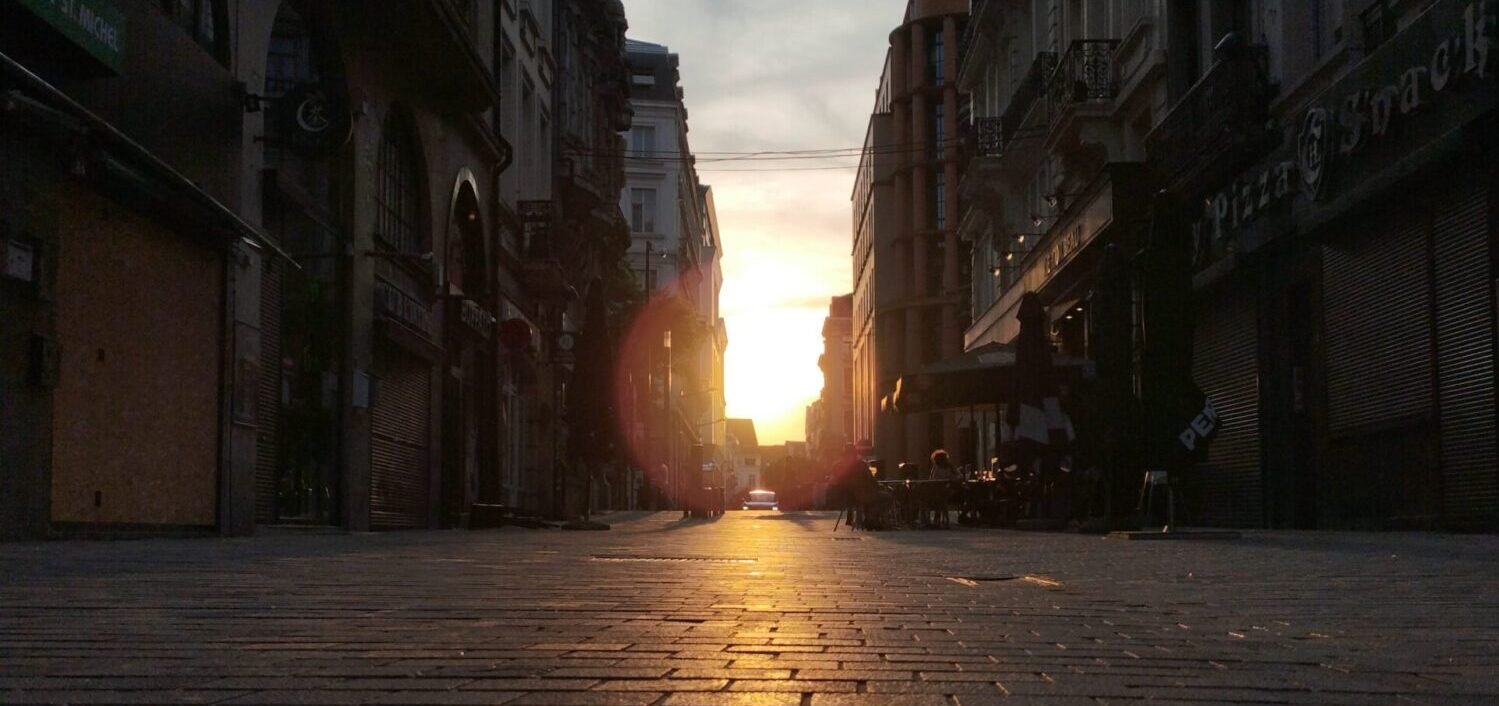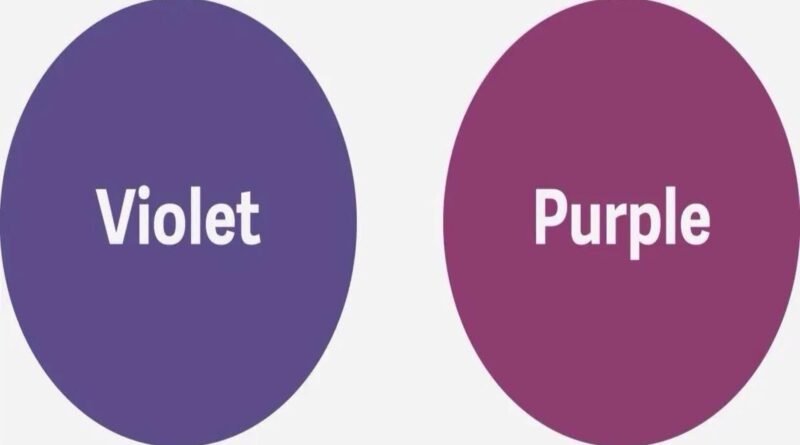Violet Appeared in Just 2–4% of Artworks Before the 1860
Imagine standing at the edge of a rainbow and watching the colors blend before your eyes. Some of the colors are created by the action of light itself, not by human hands, like the difference between purple, which is made by mixing red and blue, and violet, the pure color of the light spectrum.
Allen Tager’s artistic eye, together with color scientists Eric Kirchner from AkzoNobel and Elena Fedorovskaya from the Munsell Color Science Laboratory at the Rochester Institute of Technology, Rochester, New York, USA, led to the publication of the study “Computational Evidence of the First Extensive Usage of Violet in the 1860s.” “The research has opened an avenue for a deeper and more productive synthesis of culture, museums, and science,” said Tager. After analyzing 4,117 Western and Eastern paintings, the results showed that the frequency of various color categories varied between different cultural periods and regions. The color violet was present in only 2% to 4% of artworks created before the early 1860s. Soon after that date, however, its use rose dramatically, appearing in 36.5% to 47.9% of works.
“Color science is fascinating not only because it tells the story of the evolution of color perception, but also because it reveals the evolution of human thought.”
What particularly fascinates you about color science?
Allen Tager: Color science is fascinating not only because it tells the story of the evolution of color perception, but also because it reveals the evolution of human thought. The eye itself is merely a lens that gathers light onto the retina. The eye does not think. The vital work of interpretation belongs to the brain. This means that by studying the evolution of color perception, we can also trace the history of how human thinking developed. This is precisely what I explore-the mechanisms underlying the highest form of cognition: the intuitive mind.
“Human beings are, in principle, capable of distinguishing millions of shades of color.”
You analyzed 4,117 Western and Eastern paintings. Which of these would you say is perhaps the most famous that you included in the study?
Allen Tager: Human beings are, in principle, capable of distinguishing millions of shades of color. Yet looking is not the same as seeing. The ability to truly discern this vast spectrum was fully developed in only a handful of extraordinary colorists—artists whose astonishing perception of color sets them apart not only within the history of humankind but also from the great multitude of their fellow painters, past and present. Among the greatest and most famous colorists of all time are Titian, Veronese, Diego Velázquez, El Greco, Rembrandt, Vermeer, Peter Paul Rubens, Van Dyck, Antoine Watteau, Claude Monet, Marc Chagall, and Paul Klee. Inevitably, these rare masters were included at the very heart of our inquiry.
Violet was found in only 2–4% of artworks before the 1860s. Why is that? Did it affect artists’ creativity?
Allen Tager: Planetary, biological, and human evolution are deeply intertwined. There has never been a single moment in the history of our planet when evolutionary change ceased, not even for an instant. In this continuous unfolding, the evolution of color perception stands as a profound reflection of the development of the Earth and of life itself. Impressionist paintings became a revelation, inspiring countless young artists around the world to study and copy their approach. Through this influence, violet gradually entered many works created in the Impressionist style, enriching the visual language of painting and expanding the very boundaries of human color perception. What we take for granted today- a world rich with every shade from red to violet- is the result of a long evolutionary journey.
In the study, you used digital photographs of artworks available from museums.
Allen Tager: In recent decades, a mandatory international standard for photographing museum collections has been introduced. This has fundamentally changed many practices in the field of color science, as digitized and fully objective information published on museum websites is now easily accessible and can be read and verified with great precision using modern equipment directly in laboratory conditions. As a result, the need for costly trips to museums-and especially for obtaining permission from museum administrations to conduct research on-site-has largely disappeared.
Why should people know the difference between purple and violet?
Allen Tager: The gap between purple and violet is enormous-each color tells the story of a different stage in human evolution. Red and its shades, especially purple, have long symbolized humanity’s struggle for survival, the pursuit of power, and an inherent tendency toward violence. Red and purple have also embodied the emotional side of life. Beyond joy, most emotions-anger, anxiety, despair, disgust, envy, fear, guilt, irritation, jealousy, rage, sadness, shame, and sorrow-carry a heavy, often destructive weight on human well-being. Historically, purple was also a mark of authority and distinction, reserved for kings and high priests, setting them apart from the rest of humanity. Violet, by contrast, has a completely different meaning. In Eastern philosophy, it represents ultimate wisdom, the goal of human evolution itself.
“Analyzing this from a chemical perspective is important. Chemistry can reveal the composition of pigments, show how they were made, and distinguish ancient reddish purples from later violet pigments.”
Your study mentions that violet colors were rare before the 1860s, though purple appeared earlier. Should this be analyzed chemically as well?
Allen Tager: Yes, analyzing this from a chemical perspective is important. Chemistry can reveal the composition of pigments, show how they were made, and distinguish ancient reddish purples from later violet pigments. This helps chemists understand the materials, stability, and production methods of historical paints, while also providing insights into technological and cultural developments of the time.
Which museums fascinate you most?
Allen Tager: The museums that fascinate me most are the Metropolitan Museum in New York, the Musée d’Orsay in Paris, and the Hermitage in St. Petersburg. Their collections reflect nearly every cultural era, including works by some of my favorites-El Greco, Rembrandt, the Impressionists well as masterpieces of Ancient Egyptian art. I have always been deeply moved by that ancient civilization, with its striking minimalism combined with immense power, energy, and spirituality-qualities that remain unmatched to this day. Only in the music of Johann Sebastian Bach do I find something that comes close to the incomparable strength of Egyptian culture.
In the “Violettomania after the early 1860s” section of the study, Allen Tager points out as his most fascinating section that, despite the availability of synthetic violet pigments, almost no 19th-century artist-apart from a small group of impressionists and post-impressionists-chose to use violet in their works. Interestingly, these artists did not rely on synthetic pigments at all; instead, they achieved each shade of violet by carefully mixing traditional red and blue pigments. This is why it is striking that violet, a color that was so rarely used in practice, became a symbol of artistic experimentation.
Tager points out that this important nuance is often overlooked in the media: the fascination with violet was not widespread among artists at the time. By examining how and when colors entered artistic practice, Tager’s study reveals a broader story about the role of colors as a central tool for artistic experimentation.
Photo provided by Allen Tager


